
-
Find the right food for your petTake this quiz to see which food may be the best for your furry friend.Find the right food for your petTake this quiz to see which food may be the best for your furry friend.Featured products
 Adult Large Breed Chicken & Barley Recipe Dog Food
Adult Large Breed Chicken & Barley Recipe Dog FoodSupports healthy joints, lean muscle, and beautiful coat for large breed dogs
Shop Now Adult Chicken & Barley Recipe Dog Food
Adult Chicken & Barley Recipe Dog FoodSupports lean muscle and beautiful coat for adult dogs
Shop Now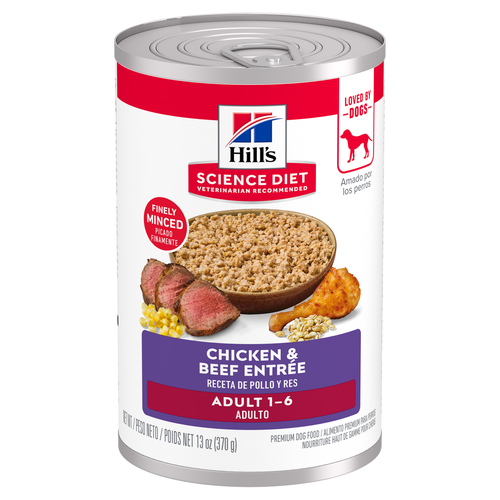 Hill's Science Diet Adult Chicken & Beef Entrée Dog Food
Hill's Science Diet Adult Chicken & Beef Entrée Dog FoodChicken & Beef Entrée in a delicious loaf with complete & balanced nutrition to help keep adult dogs active and healthy
Shop NowFeatured products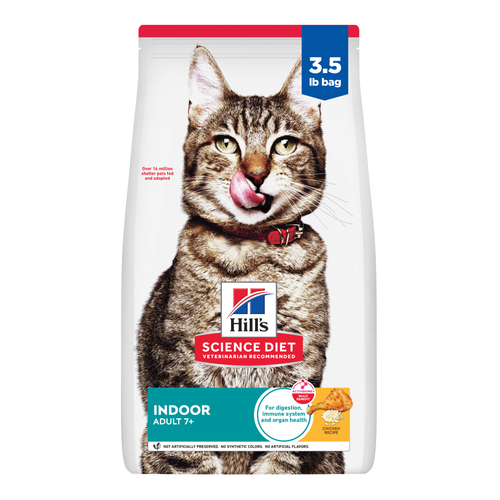 Adult 7+ Indoor Chicken Recipe Cat Food
Adult 7+ Indoor Chicken Recipe Cat FoodSupports energy level and beautiful fur in mature indoor cats
Shop Now Adult Turkey & Liver Entrée Cat Food
Adult Turkey & Liver Entrée Cat FoodPrecisely balanced nutrition with the delicious taste of minced turkey & liver to help fuel the energy needs of cats during the prime of their life
Shop Now Senior Vitality Adult 7+ Tuna & Vegetables Stew
Senior Vitality Adult 7+ Tuna & Vegetables StewImproves Everyday Ability to Get Up & Go
Shop Now -
Dog
- Dog Tips & Articles
-
Health Category
- Weight
- Food & Environmental Sensitivities
- Urinary
- Digestive
- Joint
- Kidney
-
Life Stage
- Puppy Nutrition
- Adult Nutrition
- Senior Nutrition
Cat- Cat Tips & Articles
-
Health Category
- Weight
- Skin & Food Sensitivities
- Urinary
- Digestive
- Kidney
-
Life Stage
- Kitten Nutrition
- Adult Nutrition
Featured articles The Science Behind Our Love for Pets
The Science Behind Our Love for PetsLearn the scientific reasons why we have such strong connections with our pets, and what science says about the love between humans and our furry friends.
Read More What Is Littermate Syndrome? Pet Adoption Guide
What Is Littermate Syndrome? Pet Adoption GuideLearn more about littermate syndrome in dogs and cats and how to successfully navigate adoption and early socialization processes.
Read More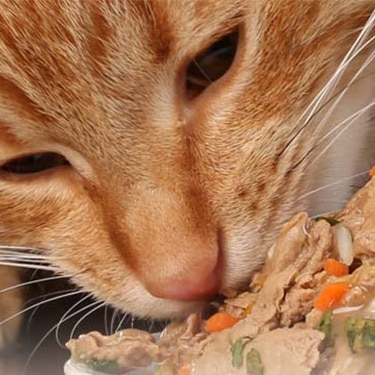 How to Properly Mix Wet & Dry Pet Foods
How to Properly Mix Wet & Dry Pet FoodsAn Orange cat eating from a bowl filled with mixed food
Read More -


When the weather outside is frightful, it's important to recognize the dangers the cold poses to your pets. While there are many guidelines on how to keep dogs safe from Jack Frost, what about cats? How cold is too cold for cats, and what can you do to ensure your kitty stays protected from extreme temperatures and other winter hazards? Read on to find out the answers to these questions and more.
What Temperature Is Too Cold for Cats?
Known for their nine lives, cats are pretty hardy. While they've evolved to endure a range of environments over time, cats are better equipped to survive in hot conditions than cold ones (though extreme heat poses risks too).
Cats have a natural coat to protect them from the winter elements. However, as a relatively small animal with little mass compared to a large surface area, this fur coat only shields them so much. Blood vessels near the skin's surface constrict to minimize heat loss, but this doesn't guarantee winter weather immunity.
Generally, most healthy adult cats can handle temperatures dropping to 50 degrees Fahrenheit. When the temperature falls below this, time outside becomes risky. Kittens, senior cats and thin cats are less able to tolerate the cold. Cats with health conditions, such as endocrine disease, heart disease or any chronic illness, are also more susceptible to cold weather's effects.
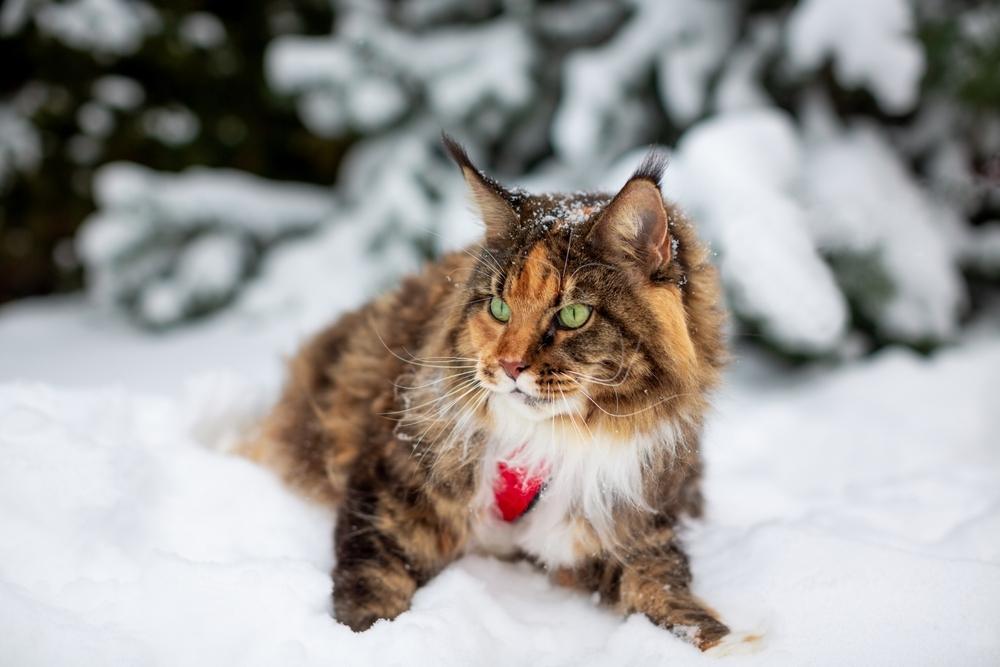
How Cold Is Too Cold for Outdoor Cats?
There's some truth to the idea that cats acclimated to living outdoors are better suited for colder temperatures. They tend to develop thicker coats, and they're more familiar with shelters to retreat to. Longer-haired and thick-coated breeds, often considered winter cat breeds, are more tolerant of cold weather, such as the Maine Coon and Norwegian Forest Cat.
Still, freezing temperatures combined with wind factor isn't a safe environment for any cat — winter cat breed or seasoned outdoor veteran. No cat should be left outside for long periods in freezing or near-freezing weather.
Signs of Cold Distress
Perhaps you've heard of frostbite, but what are the signs of hypothermia in cats? Here's what to look for:
Shivering
Dilated pupils
Lethargy
Difficulty breathing
Cold ears and paws
Loss of consciousness
If you notice any of these signs or suspect frostbite, seek veterinary care right away.


Tasty Tips
Protecting Cats From Winter Ailments and Hazards
Beyond knowing what temperature is too cold for cats, be aware of other concerns that can flare up during the colder months.
Paw Pad Protection
Sure, your cat's feet are made for walking, but can cats walk in snow? For cats who spend time outdoors, cold weather can cause cracked, dry paw pads. Your veterinarian can recommend a safe paw pad moisturizer formulated for cats. Avoid using moisturizers made for humans, which can soften pads and lead to injury.
Rock salt and chemical ice melters can also cause sores and blistering on paw pads. After outdoor time, rinse your cat's paws in warm water to remove chemicals and prevent ingestion.
Aching Joints
While osteoarthritis in cats develops gradually, cold weather may worsen symptoms, including:
Stiffness when waking or after exercise
Showing reluctance to jump to previously favored spots
Hesitating at the base of stairs
Grating heard or felt in the joints
Your vet can provide your cat with several therapies to relieve osteoarthritis discomfort, including oral medications, injections, supplements, weight control plans and acupuncture.
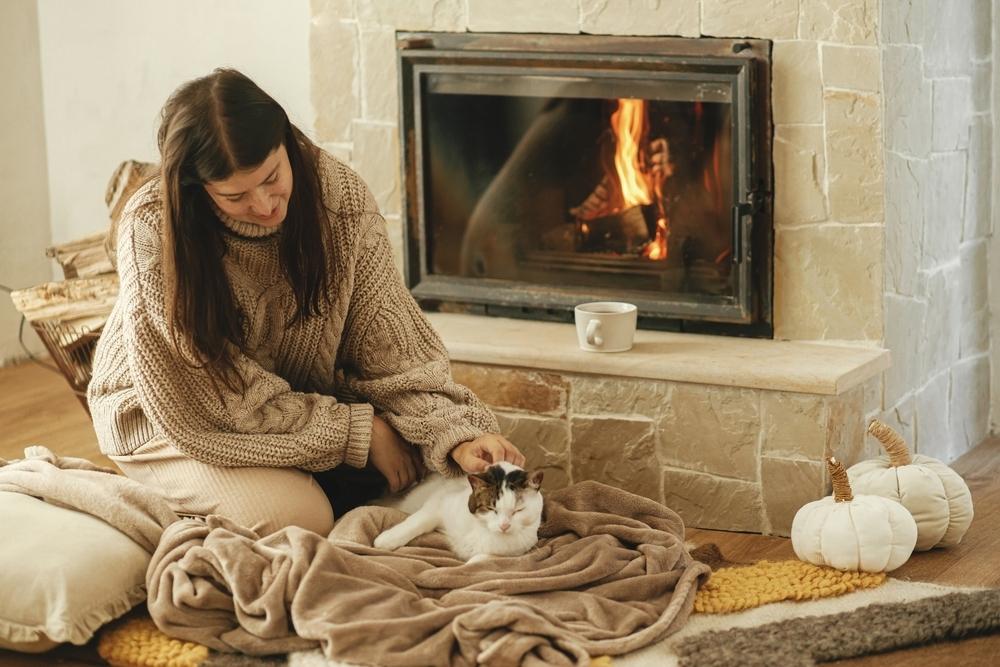
Outdoor Dangers
Antifreeze is toxic to cats and is often fatal if ingested. In addition to its primary use as an engine coolant, you can also find antifreeze in brake fluid, toilet winterizers, heat exchangers and even portable basketball hoops. The best way to prevent antifreeze ingestion is to keep your cat indoors.
If outdoor cats live in your neighborhood, bang on your car's hood or honk your horn before starting your engine. Outdoor cats often seek refuge near a warm engine or in wheel wells.
Indoor Dangers
Since your home is nice and toasty, you can be lulled into false security thinking your cat is completely insulated from harm. These safety tips can help keep your indoor cat safe during the winter months:
Provide a warm place away from drafts with a loosely draped blanket your cat can snuggle under.
Avoid electric heating pads, which can burn delicate skin. Temperature-controlled heated cat beds offer a safer solution. Some are even pressure-sensitive, meaning they only turn on when your cat is using them.
Never leave a fire unattended, even with a screen. Curious kitties can find a way, and whiskers are quick to singe.
Mind the thermostat. While most healthy adult cats can safely tolerate 50 °F, this doesn't mean they're comfortable.
What Temperature Do Cats Like?
So, what's the ideal temperature for cats? Some sources estimate the ideal range for cats is as high as 86 °F on the low end. As seekers of warmth in patches of sunshine or your lap, your cat will appreciate a thermostat bump to at least 60 °F.

Kittens, senior cats and cats with chronic illnesses may be vulnerable to adverse effects even at 50 °F.

Keeping Your Cat Cozy This Winter
So, how cold is too cold for cats? In general, temperatures below 50 °F pose health risks. Kittens, senior cats and cats with chronic illnesses may be vulnerable to adverse effects even at 50 °F. Protect your cat from winter hazards by taking preventive measures when temperatures drop. A little consideration goes a long way toward your cat's comfort and safety!


Dr. Laci Schaible is a small animal veterinarian, veterinary journalist, and a thought leader in the industry. She received her Doctor of Veterinary Medicine from Texas A&M University and her Masters in Legal Studies from Wake Forest University.
Related products

Improves Everyday Ability to Get Up & Go
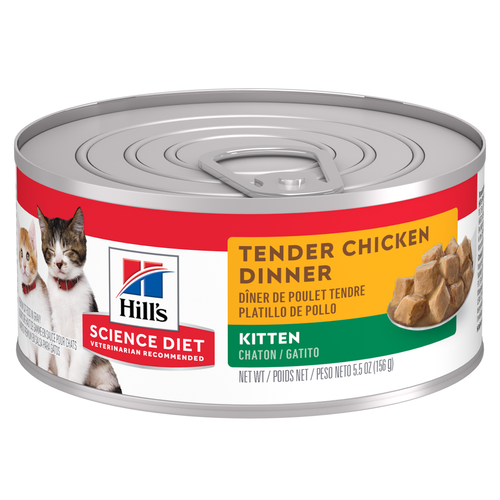
Delectable chunks with tender chicken smothered in a rich gravy

Supports energy level and beautiful fur in mature indoor cats

Precisely balanced nutrition with the delicious taste of minced turkey & liver to help fuel the energy needs of cats during the prime of their life
Related articles

When you adopt a cat, you don't just gain a best friend; you also save her life. Here's why getting a cat from a local animal shelter makes so much sense.

Discover which cat toys games your feline friend might like, and how they are great sources of exercise. Explore our library of articles to learn more.

Learn how to litter train a kitten with this guide to potty training, including when to start litter training kittens and troubleshooting tips.

Discover how to train your cat, starting with very basic first steps that both reward good behavior and discourage the bad.

Put your cat on a diet without them knowing
Our low calorie formula helps you control your cat's weight. It's packed with high-quality protein for building lean muscles, and made with purposeful ingredients for a flavorful, nutritious meal. Clinically proven antioxidants, Vitamin C+E, help promote a healthy immune system.
Put your cat on a diet without them knowing
Our low calorie formula helps you control your cat's weight. It's packed with high-quality protein for building lean muscles, and made with purposeful ingredients for a flavorful, nutritious meal. Clinically proven antioxidants, Vitamin C+E, help promote a healthy immune system.

